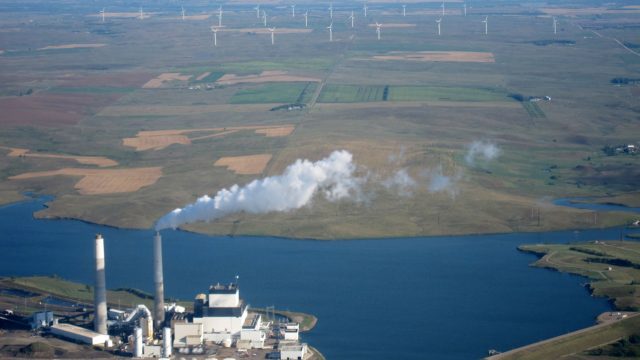Guest Post: Anti-Wind Sentiment Is “Right On”

This guest post was submitted by Perrie Schafer, the CEO of Mandan-based Environmental Services, LTD. and a board member of the Lignite Energy Council.
Having worked in the North Dakota energy industry as a business owner for the past 37 years, I take issue with many of the conclusions former Public Service Commissioner Tony Clark stated in his recent op-ed.
He is correct when he says natural gas is a competitor to the coal industry. Gas is cheap and if anyone wants to add more electrons to the grid, natural gas might be the best and least expensive option….but only if, A) there is a gas line with adequate capacity close by and, B) if the coal plant that is being replaced is truly at its life’s end. Building a new gas plant is NOT cheaper than an already existing coal plant.
However, he is dead wrong in his argument on wind…the economic calculation of “wind” vs “coal” is more complicated than most people think.
When an operator of a coal fired plant states, they are showing a loss in annual revenue, they are comparing wind to coal but including using Production Tax Credits (PTC) as a BIG part of their calculations. The PTC enables wind farms to sell into the market sometimes at negative pricing – due to the tax subsidies. Utilities are gambling on closing plants that burn coal and banking on the public’s tax payments to subsidize wind as a “base load” option. (I will not get into the ridiculousness of that statement in this writing).
The anti-wind sentiment Mr. Clark speaks to in his letter in North Dakota is RIGHT ON. Imagine being a miner or a plant employee and knowing your tax dollars are being used to put you out of a job. I applaud the counties in ND that have placed a moratorium on wind production. Wind should be eliminated from the conversation as a low-cost producer…wind should be forced to stand on its own two feet and compete if it is a truly competitive source of supply.
Now let’s compare job creation. Most jobs in the wind industry are temporary – such as construction. A coal plant operates for 40-60 years and operates at a VERY low cost. Between the mine and the power plant, hundreds of employees are hired at wages superior to those in the wind industry and at a multiple of 1 (wind) to 150+ (coal).
Now let’s talk about the service industry that supports the plants and mines…besides the hundreds of jobs tied directly to the industry, there are thousands of people employed at service companies that support the mines and plants not calculated into the ratio used above.
Mr. Clark speaks about land owners who benefit from leasing their land…true…however the BIG picture is that if you build 4000 megawatts of wind in North Dakota, which we are approaching, and then subsidize wind (PTC’s) with these same people receiving the land lease payment, we lose sight of which producer is really benefitting the economy; wind or coal, for the long term.
Finally, let us not forget the “unintended consequences” due to plant shutdowns. What happens to the economy in the small towns and counties, what happens to the schools, the main street stores, and all the suppliers who support the plants? They go away!
The people who lose their jobs due to coal plant closures are STILL paying taxes (PTC) to operate the “wind farm”, but they are not in the area to make a living any longer. So, does the landowner really benefit from withered towns and counties when there are less people to pay taxes for schools and other services?
This is the economic evaluation that must be done when comparing wind subsidies to the longevity of a coal plant.
I respect Commissioner Clark, but disagree with him on virtually every point in his op-ed.




